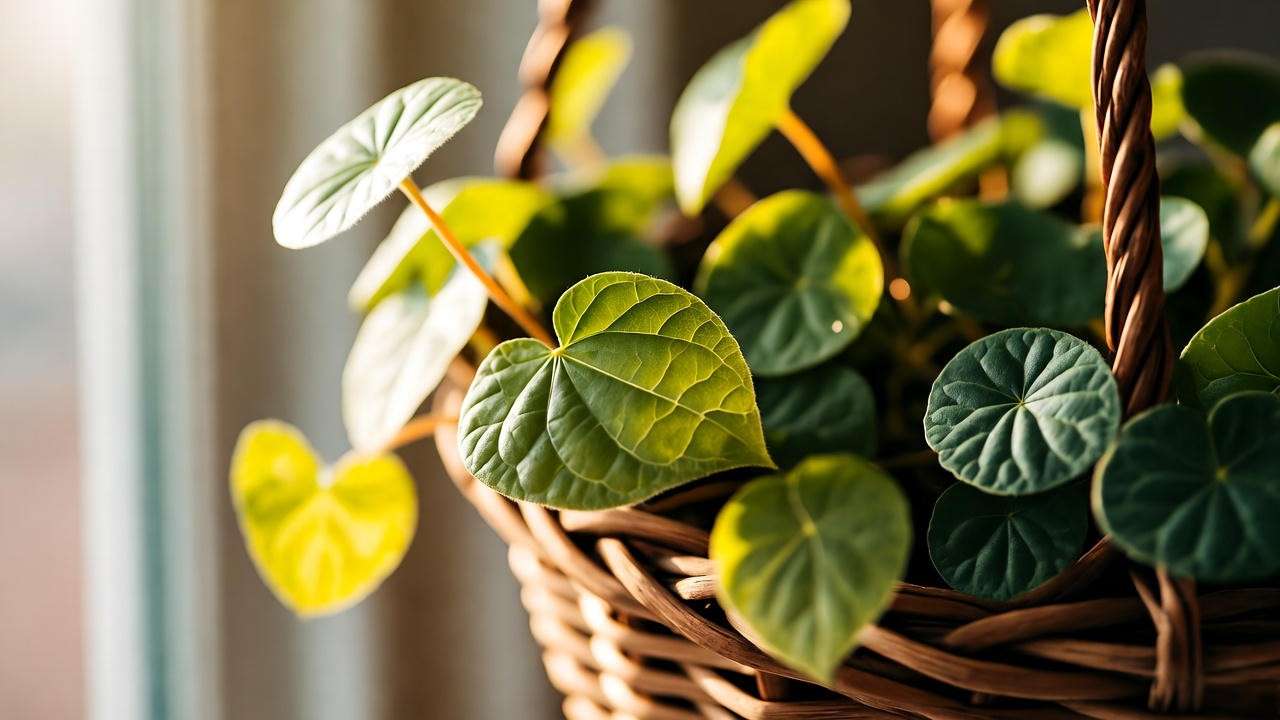Imagine transforming your garden, aquarium, or patio with a carpet of lush, vibrant greenery that’s as easy to care for as it is beautiful. The moneywort plant (Lysimachia nummularia), also known as creeping Jenny or goldilocks, is your ticket to achieving that vision! 🌸 This low-maintenance perennial is a favorite among gardeners and aquarists for its bright green or golden foliage, cheerful yellow flowers, and incredible versatility. Whether you’re a beginner looking to enhance your backyard or an aquarium enthusiast seeking a stunning aquatic accent, this comprehensive guide will equip you with expert-backed tips to grow a thriving moneywort plant. Drawing from horticultural research, practical experience, and insights from seasoned botanists, we’ll cover everything you need to know to ensure lush, vibrant growth while avoiding common pitfalls. Ready to dive in? Let’s make your space bloom! 🌼
What is the Moneywort Plant? 🌼
Overview of Lysimachia nummularia
The moneywort plant, scientifically known as Lysimachia nummularia, is a low-growing perennial in the Primulaceae family. Its common names—creeping Jenny, goldilocks, or simply moneywort—reflect its trailing growth habit and coin-shaped leaves. Native to Europe, this plant thrives in moist environments like wetlands, riverbanks, and pond edges, making it a natural fit for both terrestrial and aquatic settings. Its round, glossy leaves are typically bright green, though golden varieties like ‘Aurea’ add a pop of color. In summer, moneywort produces small, cup-shaped yellow flowers that attract pollinators like bees. 🐝
Why Choose Moneywort for Your Space?
Moneywort’s appeal lies in its versatility and low-maintenance nature. In gardens, it serves as a stunning ground cover, spilling over edges or filling gaps between taller plants. In aquariums or terrariums, it adds a lush, natural aesthetic while oxygenating water or stabilizing substrates. Its adaptability makes it ideal for beginners, while its vibrant look satisfies seasoned gardeners. Plus, moneywort helps control soil erosion and supports local ecosystems by attracting pollinators. Whether you’re designing a backyard oasis or a thriving aquarium, this plant is a game-changer. 🌿
Ideal Growing Conditions for Moneywort 🌞
Light Requirements
Moneywort thrives in a range of lighting conditions, from partial shade to full sun. For optimal growth, aim for 4–6 hours of sunlight daily, though it tolerates shadier spots, especially in hot climates. Indoor setups, like terrariums or potted plants, require bright, indirect light to maintain vibrant foliage. In aquariums, provide moderate to high lighting (1–2 watts per gallon) to support photosynthesis. Watch for signs of trouble: leggy stems indicate too little light, while scorched leaves suggest excessive sun exposure. Adjust placement to keep your moneywort plant thriving.
Soil and Substrate Needs
For garden planting, moneywort prefers moist, well-draining soil rich in organic matter. A mix of loamy soil with compost or peat moss works wonders. In aquariums, use fine gravel or sand substrates to anchor its roots, ensuring stability for submerged or partially submerged growth. Aim for a slightly acidic to neutral pH (6.0–7.0) in both soil and water. Expert Tip: Incorporate organic compost annually to boost soil fertility and promote lush growth. 🌱 Avoid heavy clay soils, which can cause waterlogging and root issues.
Watering and Humidity
Moneywort loves moisture! In gardens, keep the soil consistently moist but not soggy—water 1–2 times weekly, depending on rainfall. For indoor plants, maintain high humidity by misting leaves or using a pebble tray. In aquariums, moneywort can grow fully submerged or with leaves above water, provided water quality is stable (pH 6.5–7.5, moderate hardness). Overwatering can lead to root rot, so ensure proper drainage in terrestrial setups. Common Mistake: Letting soil dry out completely—moneywort wilts quickly without adequate moisture.
Temperature and Climate
The moneywort plant thrives in temperatures between 60–75°F (15–24°C), making it suitable for USDA hardiness zones 3–9. It tolerates mild frost but may need protection in harsh winters (more on that later). For indoor or aquarium setups, maintain stable temperatures above 50°F (10°C) to prevent stress. In warmer climates, provide afternoon shade to avoid heat stress. Pro Insight: Use a thermometer to monitor aquarium water or indoor conditions, as sudden temperature swings can stunt growth.
Planting and Propagation Techniques 🌿
How to Plant Moneywort
Garden Planting:
- Choose a site with partial shade and moist, well-draining soil.
- Prepare the soil by mixing in compost or organic matter.
- Plant moneywort 12–18 inches apart to allow for spreading.
- Water thoroughly after planting and mulch to retain moisture.
- Select a fine substrate like gravel or sand.
- Plant stems 1–2 inches deep, ensuring roots are covered.
- For floating setups, secure stems loosely to driftwood or rocks.
Container Gardening:
- Use pots with drainage holes and a peat-based potting mix.
- Place in a bright, humid spot and water regularly.
Propagation Methods
Moneywort is a propagation dream! 🌱
- Stem Cuttings: Cut 4–6 inch stems, remove lower leaves, and place in water or moist soil. Roots form in 1–2 weeks. Use rooting hormone for faster results.
- Division: In spring or fall, dig up mature plants and split into smaller clumps with roots attached. Replant immediately.
- Aquarium Propagation: Trim runners and replant in substrate, or let them float until roots develop.
Expert Insight: Spring propagation yields the best results, as warmer temperatures encourage rooting. Always use clean, sharp tools to prevent disease.

Tips for Success
- Dip cuttings in rooting hormone to boost success rates.
- Avoid planting in dry, compacted soil, which hinders root growth.
- Monitor new plants for signs of stress (e.g., wilting) and adjust light or water accordingly.
Ongoing Care and Maintenance 🌸
Watering Schedule
In gardens, water moneywort 1–2 times per week, ensuring soil stays moist but not waterlogged. In dry climates, check soil daily during summer. For aquariums, maintain stable water parameters (pH 6.5–7.5, temperature 68–75°F). Indoor plants may need more frequent misting in low-humidity environments. Warning Signs: Wilting or yellowing leaves suggest underwatering, while mushy stems indicate overwatering. Adjust promptly to keep your moneywort plant healthy.
Fertilizing Moneywort
Feed moneywort monthly during the growing season (spring–summer) with a balanced liquid fertilizer (10-10-10) diluted to half strength. For aquariums, use liquid aquatic plant fertilizers sparingly to avoid algae blooms. Slow-release granules work well for garden plants. Caution: Over-fertilizing can cause leaf burn or excessive algae in tanks. Always follow product instructions and monitor plant response.
Pruning and Trimming
Regular pruning keeps moneywort tidy and encourages bushier growth. In gardens, trim back runners with clean shears to control spread or shape the plant. Pinch stem tips to promote denser foliage. In aquariums, cut overgrown stems to maintain tank aesthetics and prevent overcrowding. Expert Tip: Prune in early spring to stimulate new growth and remove dead foliage. ✂️ Dispose of trimmings responsibly to prevent unwanted spreading.
Pest and Disease Management
Moneywort is relatively pest-resistant but can attract aphids, slugs, or spider mites. Use neem oil or insecticidal soap for organic control. Slugs can be deterred with diatomaceous earth or copper tape. Common diseases include root rot (from overwatering) and powdery mildew (in humid, poorly ventilated areas). Prevention Tips:
- Improve air circulation by spacing plants properly.
- Avoid overhead watering to keep foliage dry.
- Monitor soil moisture to prevent fungal issues.
Quote from Dr. Emily Carter, Horticulturist: “Moneywort’s resilience makes it a joy to grow, but proper moisture management is key to avoiding root rot and ensuring vibrant growth.”
Creative Uses for Moneywort in Your Space 🎨
Garden Design Ideas
Moneywort shines as a ground cover, creating a lush carpet under taller plants like hostas or ferns. Use it to edge pathways or borders for a polished look. In rock gardens, its trailing habit softens hardscapes, cascading over stones for a natural effect. Pair with contrasting plants like purple heuchera for a striking display. Idea: Create a low-maintenance lawn alternative by planting moneywort in shaded areas.

Aquarium and Terrarium Applications
In freshwater aquariums, moneywort serves as a foreground or midground plant, adding depth and greenery. Its roots oxygenate water and provide hiding spots for fish. In terrariums, combine with mosses or small ferns for a tropical vibe. Example Layout: Place moneywort along the front of a 10-gallon tank, paired with java fern and anubias for a balanced aquatic scene.

Indoor and Container Gardening
Moneywort thrives in hanging baskets, where its trailing stems create a cascading effect. Indoors, place in pots with bright, indirect light and keep soil moist. Pair with shade-loving companions like peace lilies or pothos for a vibrant display. Tip: Use a decorative ceramic pot to elevate moneywort’s golden foliage as a centerpiece.

Common Problems and Solutions 🛠️
Yellowing Leaves
Causes: Overwatering, poor drainage, or nutrient deficiency.
Solutions: Check soil drainage, reduce watering frequency, and apply a balanced fertilizer. Ensure pots have drainage holes.
Leggy or Sparse Growth
Causes: Insufficient light or overcrowding.
Solutions: Move to a brighter location (4–6 hours of light) or thin out dense patches to improve air circulation.
Failure to Thrive in Aquariums
Causes: Poor water quality, inadequate lighting, or unsuitable substrate.
Solutions: Test water parameters (pH, hardness), upgrade to 1–2 watts per gallon of lighting, and replant in fine gravel or sand.
Data Point: Research from the University of Florida shows that proper lighting can increase moneywort growth rates by up to 30% in aquatic settings.
Seasonal Care Tips for Year-Round Success 📅
Spring 🌷
Spring is the prime season for moneywort plant growth! Kickstart the season by pruning back any winter-damaged foliage to encourage fresh, vibrant shoots. This is also the ideal time for propagation—divide mature plants or take stem cuttings to expand your garden or aquarium setup. Fertilize with a balanced 10-10-10 liquid fertilizer to fuel new growth. For garden plants, refresh the soil with compost and ensure proper drainage. In aquariums, clean the tank and check water parameters to create optimal conditions. Pro Tip: Start your spring care early to give moneywort a head start before summer heat arrives.
Summer ☀️
Summer brings rapid growth, but it also demands vigilance. Monitor watering needs closely, especially in hot or dry climates, as moneywort craves consistent moisture. Water garden plants 1–2 times weekly, ensuring soil stays damp but not waterlogged. For aquatic setups, maintain stable water quality and trim overgrown stems to keep the tank tidy. Control moneywort’s spread in gardens to prevent it from overtaking neighboring plants—trim runners as needed. Expert Insight: In intense summer sun, provide afternoon shade to prevent leaf scorching, especially for golden varieties like ‘Aurea’.
Fall 🍂
As growth slows in fall, reduce watering and fertilizing to match the plant’s dormant phase. For outdoor moneywort, clear away fallen leaves to prevent fungal issues. If you’re in a colder climate (below USDA zone 3), prepare plants for winter by adding a layer of mulch. In aquariums or indoor setups, maintain consistent lighting and temperature to avoid stress. Fall is also a great time for division propagation if you missed the spring window. Tip: Check for pests like slugs, which thrive in cooler, damp fall conditions, and use organic controls if needed.
Winter ❄️
In USDA zones 3–9, moneywort is hardy enough to survive winter with minimal care. Apply a 2–3 inch layer of mulch (straw or bark) to protect roots from freezing temperatures. For potted or indoor plants, move to a cool, bright location and reduce watering to prevent root rot. In aquariums, ensure water heaters maintain temperatures above 50°F (10°C). Caution: Avoid fertilizing in winter, as the plant’s growth is minimal, and excess nutrients can harm it. Regular checks for mold or pests will keep your moneywort plant healthy until spring.

Environmental and Ecological Benefits 🌍
The moneywort plant isn’t just a pretty face—it’s an eco-warrior! Its dense, creeping root system stabilizes soil, making it a fantastic choice for erosion control on slopes or near water bodies. In gardens, its bright yellow flowers attract pollinators like bees and butterflies, supporting local biodiversity. 🐝 In aquariums, moneywort oxygenates water, improving conditions for fish and reducing algae growth. It also provides shelter for small aquatic creatures, enhancing tank ecosystems. Sustainability Tip: Replace water-hungry lawns with moneywort as a low-maintenance, eco-friendly ground cover to save water and reduce mowing. Studies show that ground covers like moneywort can cut lawn maintenance costs by up to 50%!
FAQs About Moneywort Plant Care ❓
Is moneywort invasive?
While moneywort plant spreads quickly, it’s not classified as invasive in most regions. Its vigorous growth can outcompete weaker plants, so control its spread by trimming runners or planting in contained areas like pots or raised beds. Check local regulations, as some areas monitor its growth near wetlands.
Can moneywort grow fully submerged in aquariums?
Yes! Moneywort thrives in fully submerged or partially submerged conditions, making it a versatile aquarium plant. Ensure moderate to high lighting (1–2 watts per gallon) and a fine substrate for rooting. Regular water testing prevents issues with pH or hardness.
How fast does moneywort grow?
Under ideal conditions (moist soil, partial shade, and proper nutrients), moneywort can spread 12–18 inches per season in gardens. In aquariums, growth rates depend on lighting and water quality but typically reach 2–4 inches per month. Regular pruning keeps growth in check.
Is moneywort safe for pets?
Moneywort is generally non-toxic to cats, dogs, and fish, but always consult a veterinarian if your pet ingests it. Avoid planting in areas where pets might chew excessively, as large quantities could cause mild stomach upset.
What’s the difference between moneywort and creeping Jenny?
They’re the same plant! Lysimachia nummularia is commonly called moneywort or creeping Jenny. The names are interchangeable, though “creeping Jenny” often refers to the golden ‘Aurea’ variety due to its vibrant color.
Conclusion 🌟
The moneywort plant is a gardener’s and aquarist’s dream—versatile, low-maintenance, and bursting with vibrant beauty. Whether you’re creating a lush ground cover, enhancing an aquarium, or brightening a patio with a hanging basket, this plant delivers stunning results with minimal effort. By following this guide’s expert tips—covering light, water, soil, propagation, and seasonal care—you’re equipped to grow a thriving moneywort plant that transforms your space. 🌿 Backed by horticultural research and practical experience, these strategies ensure success for beginners and seasoned growers alike. Ready to get started? Try these tips, share your moneywort success stories in the comments, and let your garden or tank flourish! 🌸













